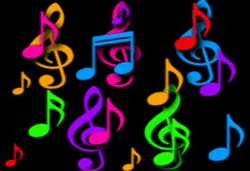Music
Music and Identity
Can music form your identity? Music can change your mood and the tone of an event. Happy music (usually played at a happy event) can make the people feel happy. It affects the individual and the group and can play a role in patriotism. During the Fourth of July and other national holidays, the government can play patriotic music to encourage people to feel patriotic. In pep rallies, music can be used to stir up school spirit.
Wartime and Armies
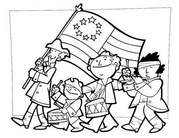
Recently, young people have been more exposed to music. Music can stir up a group of people to be nationalistic, have pride in one’s country, or be part of a revolution. There were bands in the army in earlier wars, and they served a purpose other than keeping everyone marching on beat. Not only did it signal what was happening in different parts of the war to keep one half of the army aware of what the other half was doing, but the music reminded them what they were fighting for and kept the people motivated to win the war. There were specific instruments that were often used for this purpose. The horn, the bugle, and the drum are three main instruments which were used during wartime for armies.
Nationalism
Music helped establish an identity for many European countries during the nationalism movement. Nationalism is pride in one’s country. People feel dedicated to their country and a connection to people of the same ethnicity. Cultural Identity is based off of the nation and the ethnicity. This was prominent during the nationalism movement. With some countries that were not seen as the major nations, the nations that had controlled them in previous years helped influence their identity and their music. For example, the Austrian empire, which controlled the Slavs, helped to influence their culture after ruling over them for many years. People began to use the music with which they had grown up, and this music was used to symbolize and identify that particular cultural group. Continuing with the Slavic example, the Slavs had grown up with music that their parents had passed on to them and had been passed down for generations. After joining in the nationalism movement and separating from the Austrians, they went back to this music, and the music became the music of the Slavs.
Romantic Movement
Nationalism also played a major role in music during the Romantic period. Character pieces are also part of the Romantic period. During the Romantic period, people who created works of art, including music, received their inspiration from emotions. This was a staple idea of the Romantic period. Originally starting in literature and then art, Romanticism spread to music. Romantic music reflected the identity of the composer or musician. It also borrowed from folklore and ballads often. Because of this, the common people in rural areas were able to participate in the Romantic movement. This helped to develop nationalism, as the Romantic music borrowed from its own people. To see more on Music of Different Time Periods, click here.
Music as a Mode of Communication
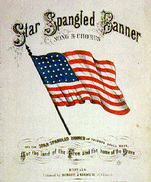
Music is a form of communication within a certain group of people. It differs between differen groups. Often, people use music to tell stories, express feelings, and to bring people together. It serves to express the connection between our world and the spiritual world. Many different groups of people use music to connect to the spiritual world, and it can be symbolic. Because the group of people decides what music will represent them, their music represents the feeling of the society. It reflects how the society views themself and the history of the society. The National Anthem of a country is chosen by that country. They choose that song to represent the ideas of their country and their most important moments. The national anthem, played before sports games and difficult times, can remind the citizens what their country stands for and why. This can stir up nationalism and encourage the people to hold on and keep trying for their country.
Music and Ethnicity
As time progressed, music has become a larger part in the identity of young people. Although many people believed that there was a universal connection and identity with music, there is a vast difference that depends on many difference factors, such as race, social status, and gender. As different ethnic groups have different types of music, music can play a role in the ethnic identity of people. The subcultural theory states that different youth groups use music to create an identity. This music is then associated with them and helps remind people what they believe in. It also helps people remember who they are and set them apart from other groups. Many different groups use music to express themselves and their identities. Music can help a group that is seen as subordinate or second-class to express themselves outside of their social realm. It helps to orient young people to their place in the world. During the Civil Rights movements of the twentieth century, Martin Luther King Junior led the African Americans away from segregation and the Jim Crow Laws and towards equality. In his speech in 1964 to the Berlin Jazz Festival, Dr. King spoke about jazz and its connection to the civil rights movement, "Jazz speaks for life. The blues tell the story of life's difficulties - and, if you think for a moment, you realize that they take the hardest realities of life and put them into music, only to come out with some new hope or sense of triumph. This is triumph music."
Feminism and Music

After there were female singers who sang rock music in the ‘70s, more women have liked rock music. These women have created a feminine identity in music. They can relate to the female singers who were determined to become famous despite the fact rock music was a male-dominated business. This empowered women and encouraged them to strive for what they believe in.
There are also a stereotype connected to instruments. Girls tend to choose “girl instruments”, while boys tend to choose “boy instruments”. But what makes a “girl instrument” and a “boy instrument”? Society has placed social pressures on children to choose an instrument that fits his/her role. Samantha Pickering and Betty Repacholi performed a study to test the gender-stereotyping of musical instruments in children. A separate study in Australia was performed to determine the gender of certain instruments. The adults who participated in this study selected the violin, flute, clarinet, and cello as the “girl instruments”. The same adults determined the “boy instruments” to be the drum, saxophone, trumpet, and trombone. Children in kindergarten and children in fourth grade were used in this study. There were three groups: the control, the stereotyped, and the counter-stereotyped groups. In the control group, a student was taken individually to watch a videotape of each of the eight instruments played. They could not see a musician; they only saw the instrument. In the stereotyped group, a student was taken individually to watch a videotape of the “girl instruments” played by high school girls, and the “boy instruments” played by high school boys. In the counter-stereotyped group, a student was taken individually to watch of a videotape of the “girl instruments” played by high school boys, and the “boy instruments” played by high school girls. All three of the groups had all eight instruments in the room; at the end, they asked the student which instrument they preferred and allowed them to try it out. The study found that most children in the control group chose gender-consistent instruments. For girls, this decreased with age, while for boys it increased with age. Most children in the stereotyped group chose gender-consistent instruments, though more boys and fourth-graders were affected by the stereotyping. The number of children who chose gender-consistent instruments dropped in the counter-stereotype group. Girls tended to choose “boy instruments”, and more boys chose “girl instruments”. However, there was less of a change in the boys. Additionally, the study found that as boys grow older, they are more likely to chose gender-consistent instruments, regardless of counter-stereotyping. Girls, on the other hand, were more likely to chose a gender-inconsistent instrument as they grew older. Pickering and Repacholi wondered about this. Was this because girls were becoming more conscious that men had more power in the world and hoped to harness some of this power? Were boys more susceptible to social pressures? Are children more likely to chose an instrument that a musician of the same-gender plays because they look up to the high school students of the same gender? All of these questions hang in the air to be answered. To see the study and its results, click here.
There are also a stereotype connected to instruments. Girls tend to choose “girl instruments”, while boys tend to choose “boy instruments”. But what makes a “girl instrument” and a “boy instrument”? Society has placed social pressures on children to choose an instrument that fits his/her role. Samantha Pickering and Betty Repacholi performed a study to test the gender-stereotyping of musical instruments in children. A separate study in Australia was performed to determine the gender of certain instruments. The adults who participated in this study selected the violin, flute, clarinet, and cello as the “girl instruments”. The same adults determined the “boy instruments” to be the drum, saxophone, trumpet, and trombone. Children in kindergarten and children in fourth grade were used in this study. There were three groups: the control, the stereotyped, and the counter-stereotyped groups. In the control group, a student was taken individually to watch a videotape of each of the eight instruments played. They could not see a musician; they only saw the instrument. In the stereotyped group, a student was taken individually to watch a videotape of the “girl instruments” played by high school girls, and the “boy instruments” played by high school boys. In the counter-stereotyped group, a student was taken individually to watch of a videotape of the “girl instruments” played by high school boys, and the “boy instruments” played by high school girls. All three of the groups had all eight instruments in the room; at the end, they asked the student which instrument they preferred and allowed them to try it out. The study found that most children in the control group chose gender-consistent instruments. For girls, this decreased with age, while for boys it increased with age. Most children in the stereotyped group chose gender-consistent instruments, though more boys and fourth-graders were affected by the stereotyping. The number of children who chose gender-consistent instruments dropped in the counter-stereotype group. Girls tended to choose “boy instruments”, and more boys chose “girl instruments”. However, there was less of a change in the boys. Additionally, the study found that as boys grow older, they are more likely to chose gender-consistent instruments, regardless of counter-stereotyping. Girls, on the other hand, were more likely to chose a gender-inconsistent instrument as they grew older. Pickering and Repacholi wondered about this. Was this because girls were becoming more conscious that men had more power in the world and hoped to harness some of this power? Were boys more susceptible to social pressures? Are children more likely to chose an instrument that a musician of the same-gender plays because they look up to the high school students of the same gender? All of these questions hang in the air to be answered. To see the study and its results, click here.
Music of Different Time Periods
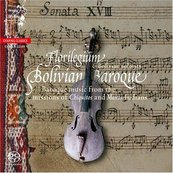
Music of different time periods each have their own identity. In history, there were Catholic hymns during the Middle Ages. Then, gradually over time, other styles of popular music developed, such as the Baroque Period, the Romantic Period, and the Modern Period. Each of these different styles of music can easily be recognized because they each had their own identity. So does each composer. When you hear a Beethoven piece, you instantly know it is Beethoven. Each composer has a different style that has set him/her apart from all of the others. For more on music of different time periods, click here.
Music Helps Establish Identity
Music helps a group establish identity. Most groups establish an identity in relation to the identity of another group. This only happens for groups that are being created, such as the civil rights group that fought for equality. This group was able to use a specific type of music, such as jazz, to be symbolic of their movement. Music helps these groups separate their identities and form their identities as a reaction to the identities of other groups. In order to establish an identity, one must be familiar with the music of other groups. This will help them to understand the other groups and distinguish themselves and their place in the world. The members of the civil rights movement compared themselves to their oppressors and made this comparison distinct in their music. Additionally, different cultural groups have different types of music. The Jewish people have a distinct style of music and a language in which this music is sung. There are other types of cultural music that can be identified, such as hispanic music, african music, tribal music, and so many more. These different styles of music were not exactly created. Instead, they evolved over time form tradition. It became a tradition to perform a certain song at certain occassions. The different styles of music that each of these groups listened to was passed down from generation to generation and most still exists in our world today. This type of music was not created, but it is associated with its respective group because its identity is what makes it different and representational of its group of people.
Learning to Play an Instrument
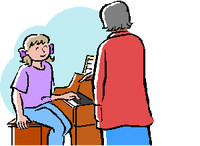
When one learns to read music and play an instrument, it is an individual experience. They have to choose which instrument they prefer and express their ideas through music. When people feel a connection to music, they generally like that style of music or that song. They do so because they can relate to the music or like the ideas in the music, which is an insight to that person. specific instrument relates to personality & gender
